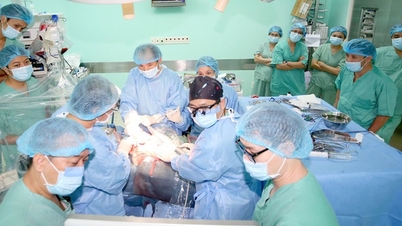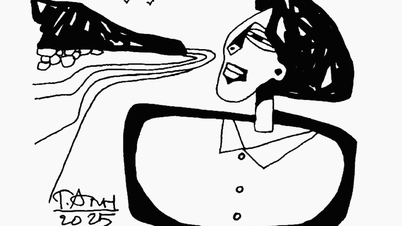Speaking to Thanh Nien newspaper on the evening of June 14, Dr. Le Quoc Hung, Head of the Department of Tropical Diseases at Cho Ray Hospital (Ho Chi Minh City), said that the toxin in the mushroom poisoning incident in Tay Ninh has been identified as belonging to the Amanitin toxin group.
"This group of viruses is highly toxic, rapidly damaging the liver and causing a high mortality rate despite the application of many intensive treatment methods," Dr. Hung analyzed.
According to Dr. Hung, since there are no more mushroom samples, determining the toxin will depend on the progression of the illness, and after that, they will have to find a way to obtain mushroom samples locally for testing. However, because the patient's family picked many different types of mushrooms, it is not yet possible to accurately identify which poisonous mushroom the family consumed.

Amanita phalloides is a poisonous mushroom in the Amanita group that can be fatal.
According to the National Center for Biotechnology Information (USA), 95% of deaths worldwide from mushroom poisoning are due to mushrooms containing amatoxins. Amatoxins interfere with protein synthesis and cause severe liver failure, leading to a high risk of death.
Amanita mushrooms lack a distinct flavor or smell, but they typically grow to between 5 and 15 cm in size and are often difficult to distinguish by color or appearance from edible species.
The process of Amanita toxin poisoning has three stages.
The first phase occurs 6-12 hours after eating. For at least the first 6 hours, the person who ate usually has no symptoms. After this phase, the patient begins to experience nausea, abdominal cramps, watery diarrhea, and signs of dehydration. Examination will reveal low blood pressure, dry mucous membranes, a rapid heart rate, and dehydration.
The second phase occurs when the patient appears to temporarily recover and the initial symptoms resolve, but liver damage continues. This phase can last 2-3 days and is characterized by elevated liver function, increased transaminases and bilirubin, increased coagulation disorders, and ultimately, the progression to hepatic encephalopathy.
In stage 3 , both liver and kidney function are impaired. Hepatorenal syndrome and hepatic encephalopathy can develop rapidly after tests reveal severe liver damage, and death can occur within 3-7 days.
* Previously, on June 6th, information from Cho Ray Hospital indicated that three members of a family in Tay Ninh were admitted to the emergency room in critical condition. Medical history revealed that approximately 3-4 days before admission, the couple had picked mushrooms and stir-fried them with zucchini. About 8-12 hours after eating, the husband, wife, and daughter successively experienced abdominal pain, vomiting, and severe diarrhea, with their condition progressively worsening. The family was transferred to a local hospital and then to a hospital in Ho Chi Minh City.
During the transfer to the hospital, the husband experienced shortness of breath and respiratory failure, requiring intubation and manual ventilation. However, he died in the Emergency Department of Cho Ray Hospital. The wife, after treatment for liver dysfunction and blood clotting disorders, requested to be discharged and subsequently passed away. Their 17-year-old daughter's health improved after treatment.
Source link












































































































Comment (0)